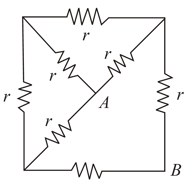In the circuit shown in figure, switch is closed at time
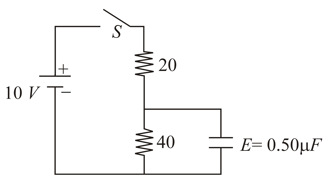
(A) What is the current leaving the battery at , immediately after the switch is closed?
(B) The current “long time” later?
(C) What charge has accumulated on the capacitor after this long time?
(D) If, finally, switch is opened again, how long will it take after the switch is opened for the capacitor to lose of its charge?

(A) What is the current leaving the battery at , immediately after the switch is closed?

Important Questions on Electric Current and Circuits
For the circuit arrangement shown in the figure,
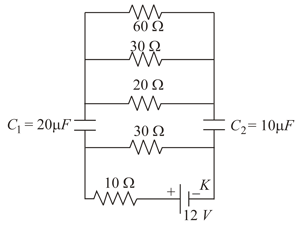
(a) Find the potential difference across each capacitor in the steady-state condition.
(b) Find the current through the resistor just after the instant when the key is opened.
Find the potential difference between the plates of the capacitor in the circuit shown in the figure. The internal resistances of sources can be neglected.
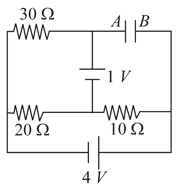
(A) What is the potential difference between points and in figure when switch is open?
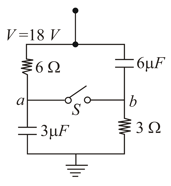
(B) Which point, or , is at the higher potential?
(C) What is the final potential of point when switch is closed?
(D) How much does the charge on each capacitor change when is closed?
For a circuit shown in figure, switch is closed at , then at is opened and is closed.
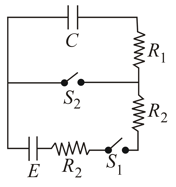
(a) Find the charge on capacitor at .
(b) Find current through (adjacent to the battery) at .
The equivalent resistance between and in figure is,
